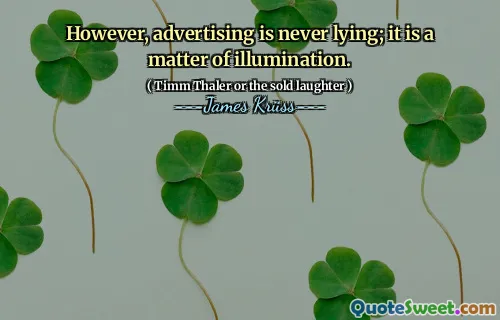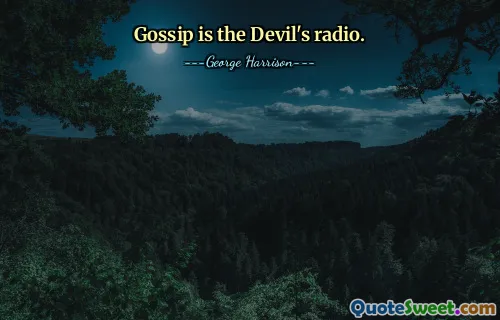
However, advertising is never lying; it is a matter of illumination.
The quote highlights an interesting perspective on advertising, suggesting that it doesn’t outright deceive but rather aims to illuminate certain aspects or attributes, often casting a specific light that makes products or ideas appear more appealing. This notion invites us to rethink the common skepticism about advertisements, recognizing that their primary goal is to capture attention and influence perception, not necessarily to tell the whole truth. In the context of society and consumer culture, advertising serves as a form of storytelling—a way to present products or concepts within a certain framework that appeals emotionally and psychologically.
From a philosophical standpoint, this can be seen as an acknowledgment that all communication involves a certain degree of illumination—filtering reality through a lens that emphasizes particular features while potentially obscuring others. This selective highlighting can be beneficial, as it informs and persuades, but it also comes with the responsibility to remain honest. When an advertisement 'illuminates' by emphasizing only favorable features, it risks creating an illusion rather than an accurate representation, which can lead to misconceptions.
Moreover, understanding advertising as a form of illumination emphasizes its power to shape perceptions and influence decisions subtly. It acts like a spotlight in a dark room, guiding your attention where the creators want it to be. Recognizing this can foster a more critical approach toward consuming media and marketing messages, encouraging individuals to seek out broader contexts and truth beyond the illuminated images.
Ultimately, the quote encapsulates the delicate balance between truth and influence in advertising, reminding us that every piece of communication is a form of lighting—shaping our understanding, perceptions, and ultimately, our choices. This awareness ensures we remain vigilant and discerning consumers in a world saturated with messages designed to illuminate certain facets while potentially hiding others, always seeking a fuller, more truthful picture.






